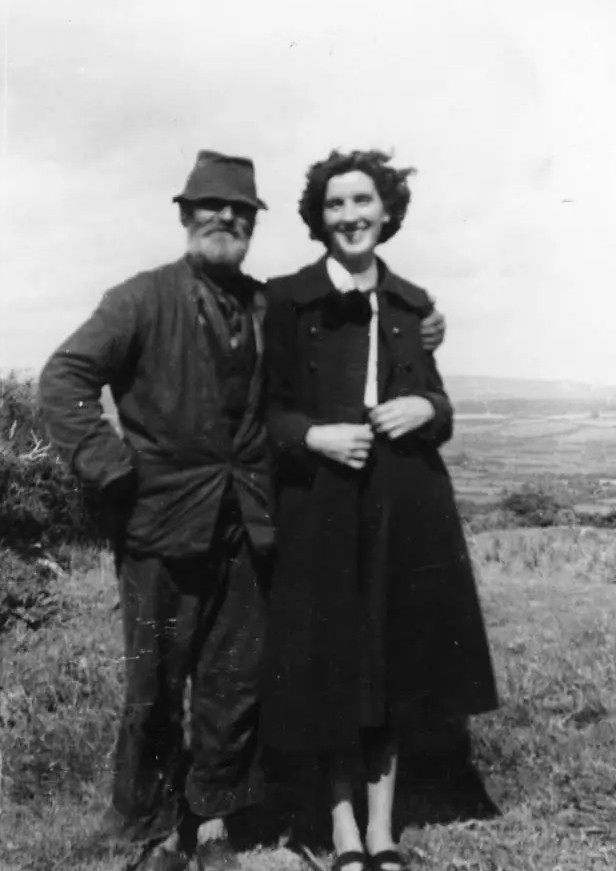The beauty that we have right on our doorsteps…A worthwhile hike through nature and history in the Comeraghs

For many years, the day after confirmation for the boys in the Green school meant one thing. A hike up the imposing Comeragh Mountains. Loading onto a bus, the taste of impending freedom from primary school almost tangible, and the anticipation, trepidation and unknown awe at the next stage in life created an extra air of excitement. Sadly, for some that day was the only time that they explored the glacial peaks and the quiet, almost eerily silent lakes.
The magnificent Comeraghs stretch as far as the eye can see from west to east from our town. The Sun runs the whole way along its peaks, rising at the Dungarvan extremes and setting well beyond the Vale of Honey.
There are many wonderful aspects to the mountains, the deep lakes, always cold against the skin of those brave enough to take a dip, the multitude of signed walks through heather covered fields, and over sky high cliff edges that drop straight down, chiselled out by mother nature during the last ice age.
One of the most scenic but challenging walks of the mountains is the 6-kilometre hike known as the Coumshingaun Loop. The start of the walk is based at Kilclooney woods, itself a beautiful picnic spot for those more inclined towards a leisurely enjoyment of nature.
Starting off with a hike through a grassy area one finds a rocky, slippery section underfoot next. The loop should be completed clockwise and brings the hiker all around the impressive Coumshingaun lake, before returning once more to the car park for a well-earned rest.
The nature and scenery around the mountains are major aspect of the area, but the history, folklore and stories that are part of the area are as amazing.
The area around Mahon Falls, with its picturesque waterfall also has many stories about “the little people” with a “fairy tree” in the area as well as the world-famous magic road. Some say the road is an optical illusion but many of the older people in its vicinity claim that it is in fact the work of the little people that moves vehicles uphill.
The story of Crotty the robber is one of mystery, escape, robbery and death and one that is almost as much a part of the Comeraghs as its peaks and lakes.
William Crotty, or ‘The Highway Robber’ was an 18th century highwayman who hid himself away in a cave at the foothills of the Comeraghs. He was the leader of a gang of highwaymen who stole from the rich to give to the poor, much in the same manner as Robin Hood. His many enemies described him as a bloodthirsty murderer and said that “the devil wouldn’t pick his bones” while the country people claimed that he was very generous with any monies he managed to rob from the upper classes.
Crotty knew the Comeraghs like the back of his hand, so when he was being chased by the authorities he could easily hide on the mountain range. This was very frustrating for the guards, so they started to offer bribes to some of Crotty’s men asking for information on where he was hiding. Legend has it that David Norris, who was Crotty’s most trusted companion, accepted these bribes.
One night in February 1742, when he’d poured enough whiskey into Crotty to make him sleepy, he wet his gunpowder and stole his dagger. When the guards arrived to arrest him, Crotty didn’t stand a chance.
In March that year, Crotty was trialled in Waterford City and found guilty. He was executed by hanging and then had his head cut off and spiked outside the County Jail as a warning to those wishing to follow in his footsteps.
The legend of William Crotty is a very important part of Waterford’s heritage and many of the landmarks in the Comeragh mountains are named after him. His ghost is known as Dark Stranger who “comes out of the mist, tall, dark clothed, moving purposefully, his footsteps making no sound.” The ghost can also be seen on a white horse. He would cross the Crough Road and ride towards the Crotty’s Rock, Rathgormack and Carrignagower where his treasures lie hidden somewhere beneath a rock with a hoof mark.
As well as stories from centuries ago, which may or may not have been embellished by the passage of time, there are stories of interest from the area within living memory that many still recall. One of these is the story of the man who became known to all as Lackendara. Born in the area, Jim Fitzgerald was raised by his grandparents and left to fight in World War I.
Jim returned to his native towns land after the war suffering from what would now be described as a post traumatic disorder but was simply called “shell shock” in that era.
The Lackendara moved into what was for all intents and purposes a small cave halfway up the side of the mountain around the Coumshingaun area. Here he lived in solitude and isolation, save for travelling into Kilmacthomas every few weeks to get his few supplies after collecting his pension.
The story of Jim Fitzgerald is a strange, sad yet beautiful one. A man who suffered so much due to the evils of war, spent his remaining days living alone, with just the sheep, foxes and nature for company and with his companions he was truly at peace.
Hopefully over the coming few months we will get a bit of a summer and if we do, one could find a hell of a lot of worse ways than to spend it amongst the nature, folklore, stories and scenery that makes The Comeraghs.